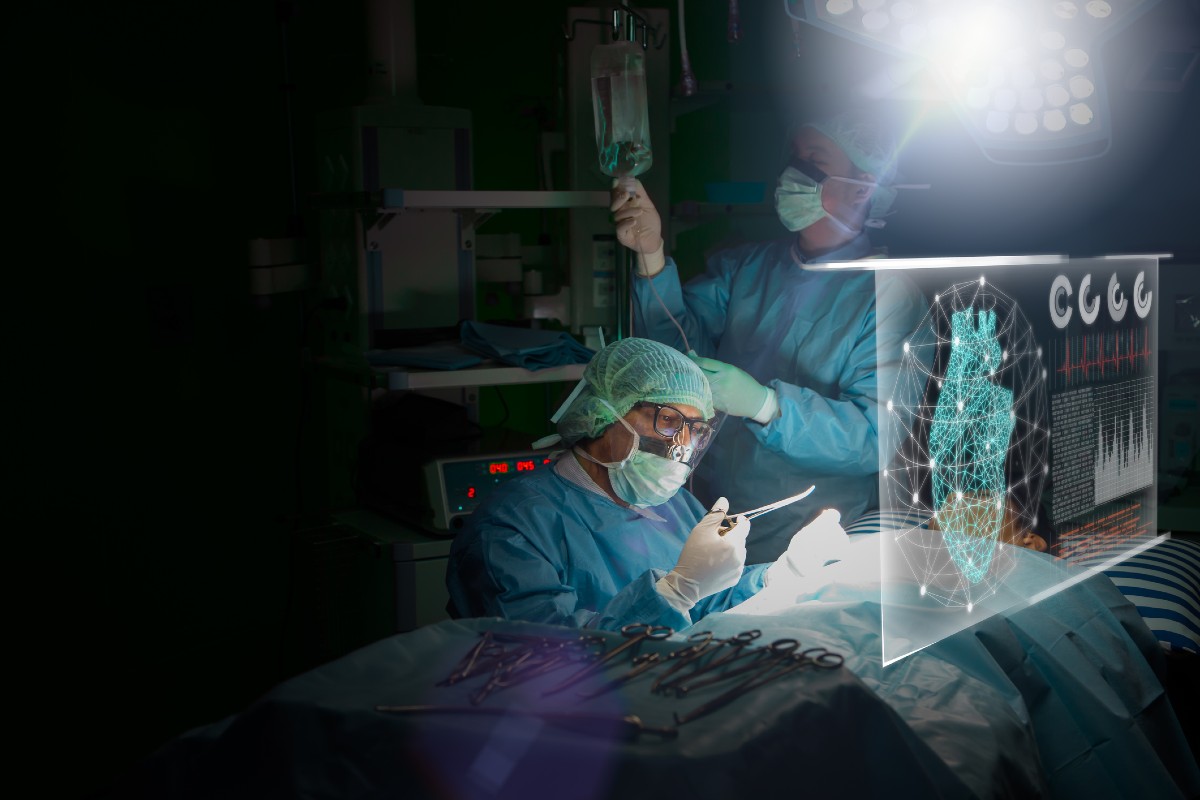AI has already become entrenched in pharma and health companies, but COVID-19 is driving faster innovations.
AI was already very much on the pharma and health industries’ radar, but the COVID-19 outbreak has considerably accelerated its adoption and use-case rates. ABI Research points out that, in addition to AI spending being projected to top $2 billion in the next five years, some of the world’s leading tech companies are actively developing AI-powered medical tools. Meanwhile, some pharma leaders (like GSK and Sanofi, according to Clinical Trials Arena) are banding together to understand the virus and ultimately hasten the end of the outbreak.
AI’s processing might make it a good fit for many COVID-related tasks, from managing data from large-scale studies to identifying high-risk patients. Looking at AI’s current capabilities in three areas – medical assistance, drug discovery, and diagnosis/prevention – gives us a very good idea of how the next few years are likely to play out in pharma- and healthcare-related technology.
On-Demand Webinar
7 Surprising Predictions about Consumers in the New Normal
How AI Is Being Used to Combat COVID
Let’s look at three areas where AI is being used to battle COVID-19: as an in-office or virtual “assistant”, in drug discovery, and in improved diagnosis and prevention.
AI-Powered Medical Assistance
From a patient’s standpoint, the most visible way AI can be used against COVID-19 is as a customer-facing agent. In time, we can expect to see AI-powered robots in doctor’s offices, hospitals, and clinics directly interacting with patients and staff: taking temperatures, delivering meals or supplies, cleaning and disinfecting exam rooms and waiting areas, and monitoring patients. This would not only reduce the pervasive time crunch in medical facilities, it would reduce the staff’s exposure to contagion.
Currently, though, medical assistant robots are not widely available. Instead, many people’s interaction with AI is through chatbots. Specially-programmed AI chatbots can be deployed to screen patients and answer questions that they have about their symptoms or COVID in general. By serving as information gatherers and dispensers, chatbots help speed up a vital part of the healthcare process.
This tech in action: Verily and Google Cloud’s Pathfinder virtual agent template for health systems and hospitals “enables [health systems] to create chat or voice bots that answer questions about COVID-19 symptoms and provide the latest guidance from public health authorities like the Centers for Disease Control and Prevention and World Health Organization (WHO).” [Source: Google Cloud]
Drug Discovery
Finding an effective drug can take years; not only do new drugs have to be tested for efficacy, but current drugs need to be carefully scrutinized as well. Pharma companies are using AI tools to analyze virus proteins and determine the best ways to break them down (thus preventing the virus from taking hold). They’re also trying to determine which existing medications (or combinations of medications) can act effectively as a treatment or vaccine. As has been well-publicized in the news, some unusual compounds – including llama antibodies – are being tested for their preventative or curative actions. [Source: New York Times]
This tech in action: Canadian biotechnology company Cyclica is using AI to test thousands of drugs against COVID-19: “Cyclica used its proprietary deep learning engine, MatchMakerTM, to screen a collection of more than 6,700 FDA-approved drugs and drug candidates with at least Phase I clinical data against the structurally-characterized human proteome. […]Cyclica’s scientists investigated both human targets as well as viral proteins with potential therapeutic relevance for COVID-19 in rapid fashion.” [Source: CyclicaRX]
Diagnosis and Prevention
Given that AI is excellent at finding patterns, it makes sense to use it to enhance diagnostic efforts. AI has been used to analyze CT scans and diagnosis the presence and severity of COVID-19 – often more accurately and quickly than human diagnosticians. It can also be used to identify which patients are at higher risk for COVID complications, predict the severity of the case, and recommend steps to prevent infection. And there’s also tracking infected people’s contact with others – vital in managing the infection’s spread within communities.
This tech in action: At Sungai Buloh Hospital in Malaysia, Huawei has deployed a medical image analysis program to improve the diagnostic process. “The Huawei Cloud AI-assisted quantitative medical image analysis system […] can analyze hundreds of CT images in seconds, precisely locating lesions, and doctors can now provide diagnosis results in just one minute. […] The AI platform has been trained with 4,000+ confirmed COVID-19 patients’ image data and can serve as a “super doctor”. [Source: Huawei.com]
Post-COVID, Health and Pharma Tech Will Flourish
Now and in the post-COVID future, AI has the potential to transform the pharma and healthcare industries. It can provide previously-unavailable insights by digging deep into the data. It can help doctors keep up with the sheer volume of medical research produced. By cutting down diagnosis times, it can help healthcare workers move faster and more efficiently against health threats. And, most importantly, it can improve the standard of patient care.
This will help pharma and healthcare companies better manage their current circumstances. And should another crisis surface, such organizations can use AI to predict and prepare for similar situations. The gold-metal target, of course, is to use AI as an ally in finding a cure and delivering drugs faster and more efficiently than ever before.
Related Absolutdata products and services: AI & Data Sciences, NAVIK AI Platform, Customer Analytics, Marketing Analytics,































